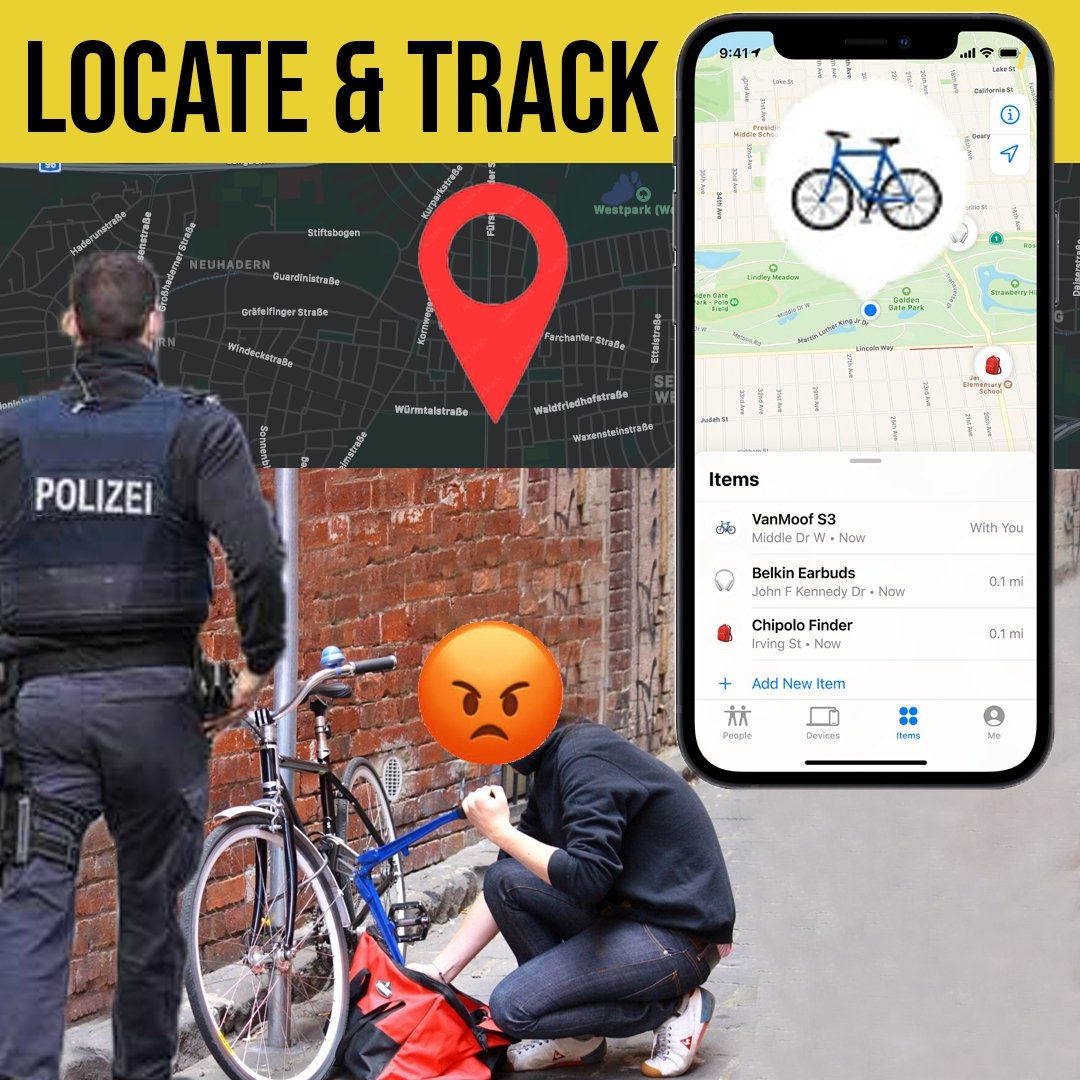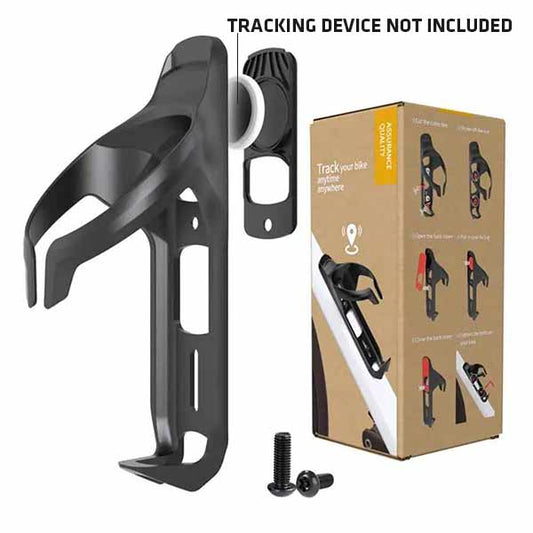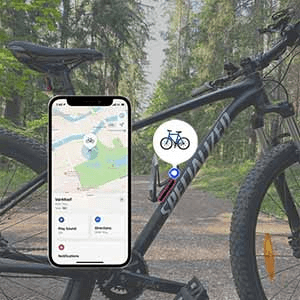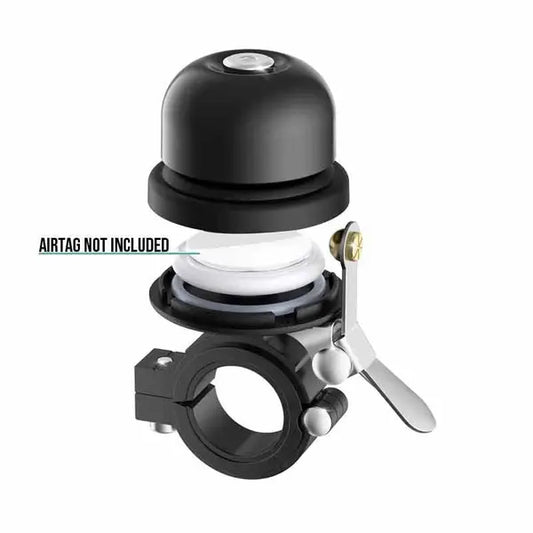10 Smart Ways to Prevent Bike Theft in 2025
Bike theft remains a persistent and evolving threat as bikes—especially e-bikes—become more expensive and numerous. In 2025, sophisticated thieves, high-tech gadgets, and urban environments demand proactive defense. This guide offers the most current, proven, and practical solutions to keep your ride safe—whether you're a commuter, student, or weekend rider.
For a deeper analysis on how smart locks and AirTag mounts can protect your bicycle, see these best anti-theft gear recommendations for 2025.
Understand the types of bike locks (and their vulnerabilities)
The foundation of bicycle security begins with selecting the right lock. Each type offers distinct advantages and has specific weaknesses that savvy thieves might exploit.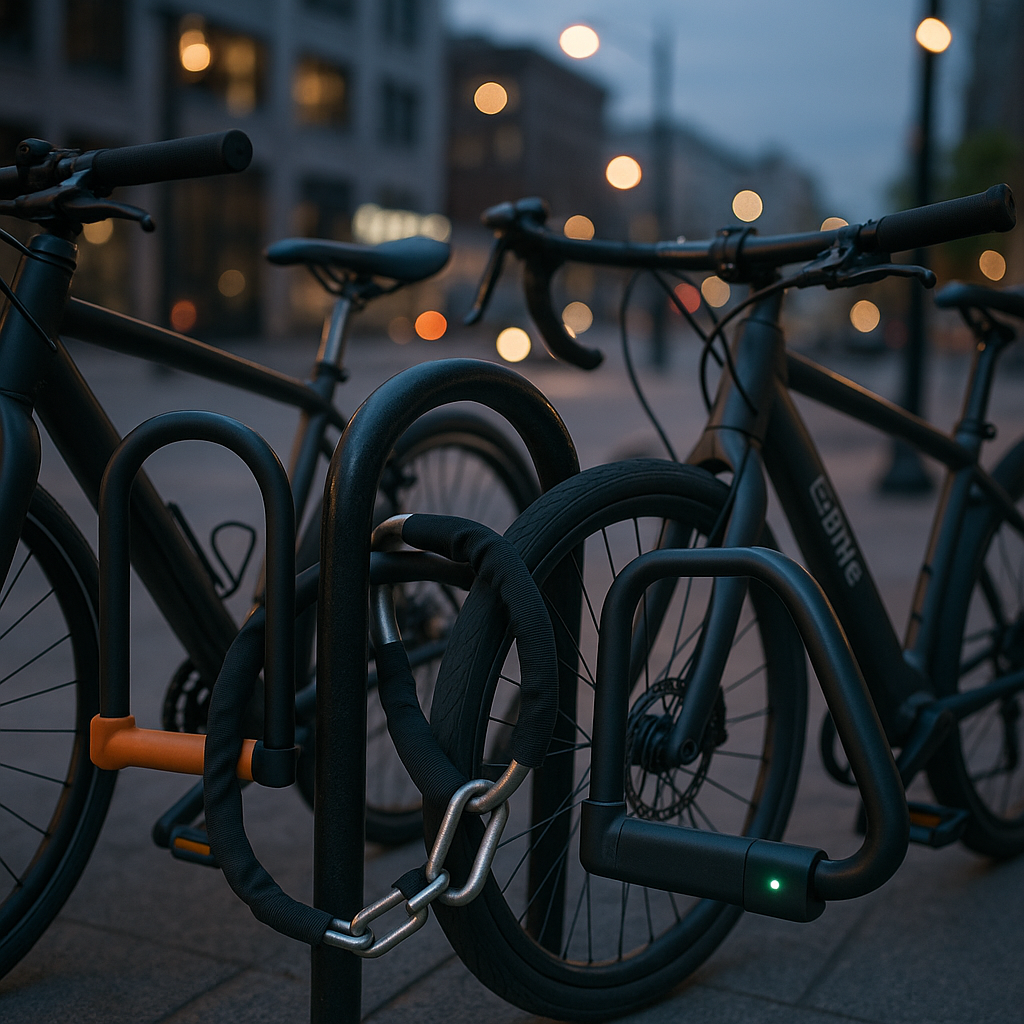
U-locks
These sturdy, rigid locks provide excellent security with hardened steel that resists cutting tools. Modern U-locks incorporate pick-resistant disc detainer mechanisms and reinforced crossbars. The compact design limits what you can secure, but makes them difficult to leverage or break. Premium models now feature anti-drilling plates and dual-locking mechanisms.
Chain locks
Chains offer flexibility and reach, allowing you to secure your bicycle to larger objects. High-quality versions use hardened steel links at least 10mm thick with protective sleeves to prevent frame scratches. The weight makes them less portable than other options, but they're more resistant to leverage attacks than U-locks.
Cable locks
While lightweight and flexible, cables should only be used as secondary protection. Even reinforced cables can be cut relatively easily with bolt cutters. Their main advantage is securing wheels and accessories alongside a primary lock.
Smart locks
The newest category in bicycle security combines physical protection with electronic features. These include fingerprint recognition, Bluetooth connectivity, tamper alerts, and integration with tracking apps. While convenient, their electronic components can sometimes be vulnerable to tech-savvy thieves.
The best approach is understanding that no lock is unbreakable—the goal is making your bicycle require more time and specialized tools to steal than others nearby.
Use two locks—the double locking method
The double locking method dramatically increases your bicycle's security by creating multiple obstacles for would-be thieves. Campus security experts and police consistently recommend this approach for high-value cycles.
When thieves encounter a bicycle secured with two different lock types, they're faced with a significant problem: they need two different sets of tools and must spend twice as much time in a vulnerable position. Many will simply move on to easier targets.
Recommended lock pairings (2025 update)
- Primary U-lock securing the frame and rear wheel to an immovable object, plus a heavy chain through the front wheel and frame
- Heavy-duty chain lock through the frame plus a secondary U-lock for the wheels
- Smart lock with alarm features combined with a traditional high-security lock
- U-lock securing the frame with a cable threaded through both wheels
For optimal protection, use locks from different manufacturers, as professional thieves may carry tools specialized for specific brands.
An AirTag bike mount case with secret security screws helps recover bicycles if stolen, especially when paired with robust locking. This tracking capability adds a crucial recovery layer to your protection strategy.
Park smarter—choose the right locations
Where you park matters just as much as how you lock your bicycle. Strategic parking significantly reduces theft risk by maximizing visibility and deterrence.
Seek well-lit, high-traffic areas with plenty of pedestrian activity. Official bicycle racks installed in visible locations with security camera coverage offer substantially better protection than isolated spots. Municipal security studies show thieves strongly prefer secluded locations where they can work without witnesses.
Campus security coordinators recommend parking near building entrances where security staff regularly patrol. Many university campuses now designate "secure bicycle zones" with enhanced monitoring and better infrastructure.
When possible, vary your parking routine if you regularly visit the same locations. Thieves sometimes scout valuable bicycles by observing predictable parking patterns. If you must park in higher-risk areas, consider using a visually distinct bicycle cover that conceals your ride's value while adding another layer for thieves to deal with.
For overnight or extended parking, seek indoor options whenever available. Many urban areas now offer secure bicycle parking garages with controlled access, which dramatically reduces theft risk compared to street parking.
Leverage new anti-theft tech
The anti-theft technology landscape has evolved significantly, offering cyclists powerful new tools to protect their investments. These innovations fall into two categories: deterrence and recovery technologies.
GPS trackers have become smaller, more accurate, and longer-lasting. Apple's AirTag provides an accessible tracking solution that leverages the vast network of iOS devices to locate your bicycle if stolen.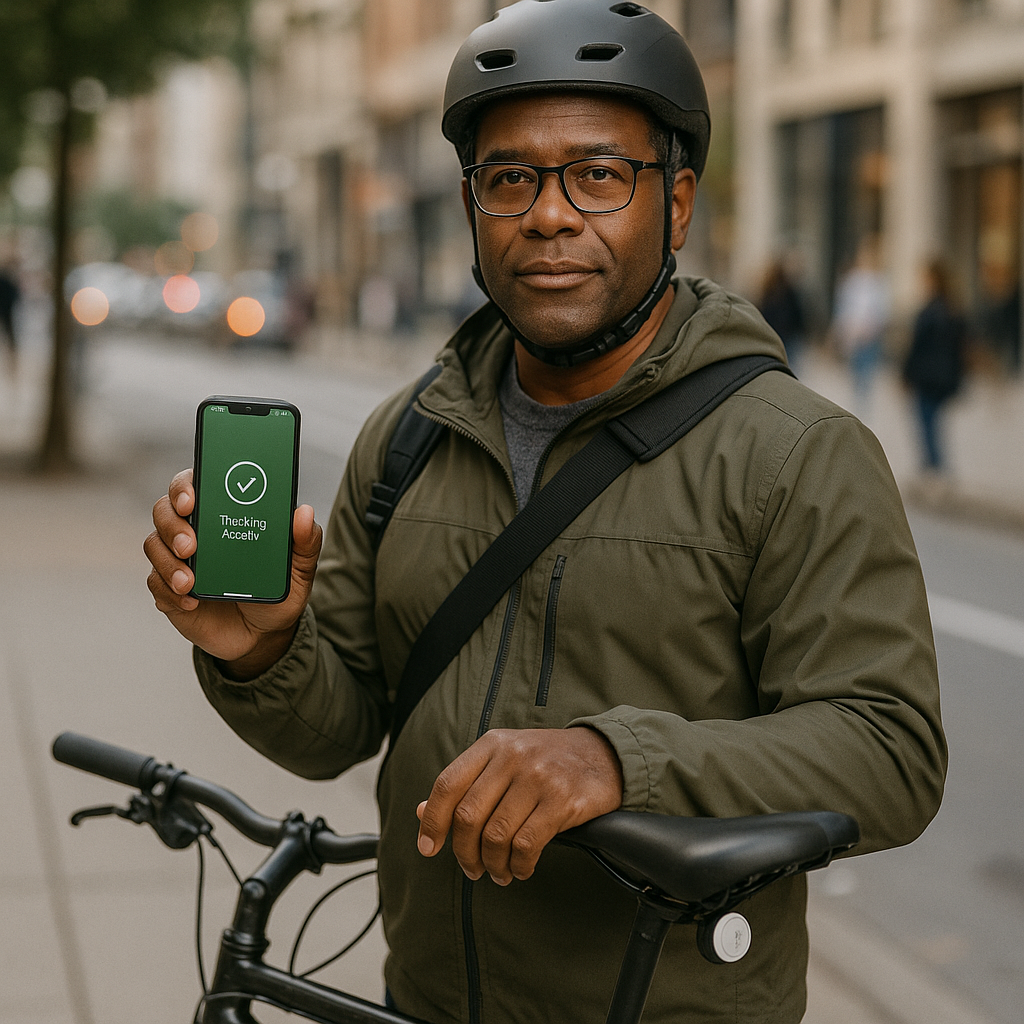
Specialized bicycle trackers now offer extended battery life, tamper alerts, and motion detection with instant notifications.
Smart locks combine physical security with electronic features like fingerprint access, tamper alarms, and smartphone connectivity. Many now include built-in 110+ decibel alarms that activate when unusual movement is detected. Some advanced models even notify nearby users of their network when a theft is in progress, creating a community alert system.
To maximize discretion, conceal trackers within the frame, under the saddle, or in specially designed components. Thieves routinely check obvious mounting locations but rarely disassemble bicycles before selling them.
Learn more about the power of AirTag bike mounts for cyclists to implement an effective tracking strategy that complements your physical security measures.
Register your bicycle
Bicycle registration significantly improves recovery chances if your bicycle is stolen. This simple preventative step creates a verifiable link between you and your property that helps authorities return recovered bicycles to their rightful owners.
National registration databases like Project 529 and Bike Index maintain records accessible to law enforcement across jurisdictions. These services allow you to upload photos, serial numbers, and distinctive features that make identification possible even if thieves alter your bicycle's appearance.
The registration process typically involves:
- documenting your bicycle's serial number (usually found under the bottom bracket)
- photographing your bicycle from multiple angles
- noting distinctive features or modifications
- uploading proof of purchase
- applying registration stickers (which themselves act as deterrents)
Many police departments and university campuses offer free local registration programs that complement national databases. These programs often provide tamper-resistant registration stickers that warn potential thieves that the bicycle is traceable.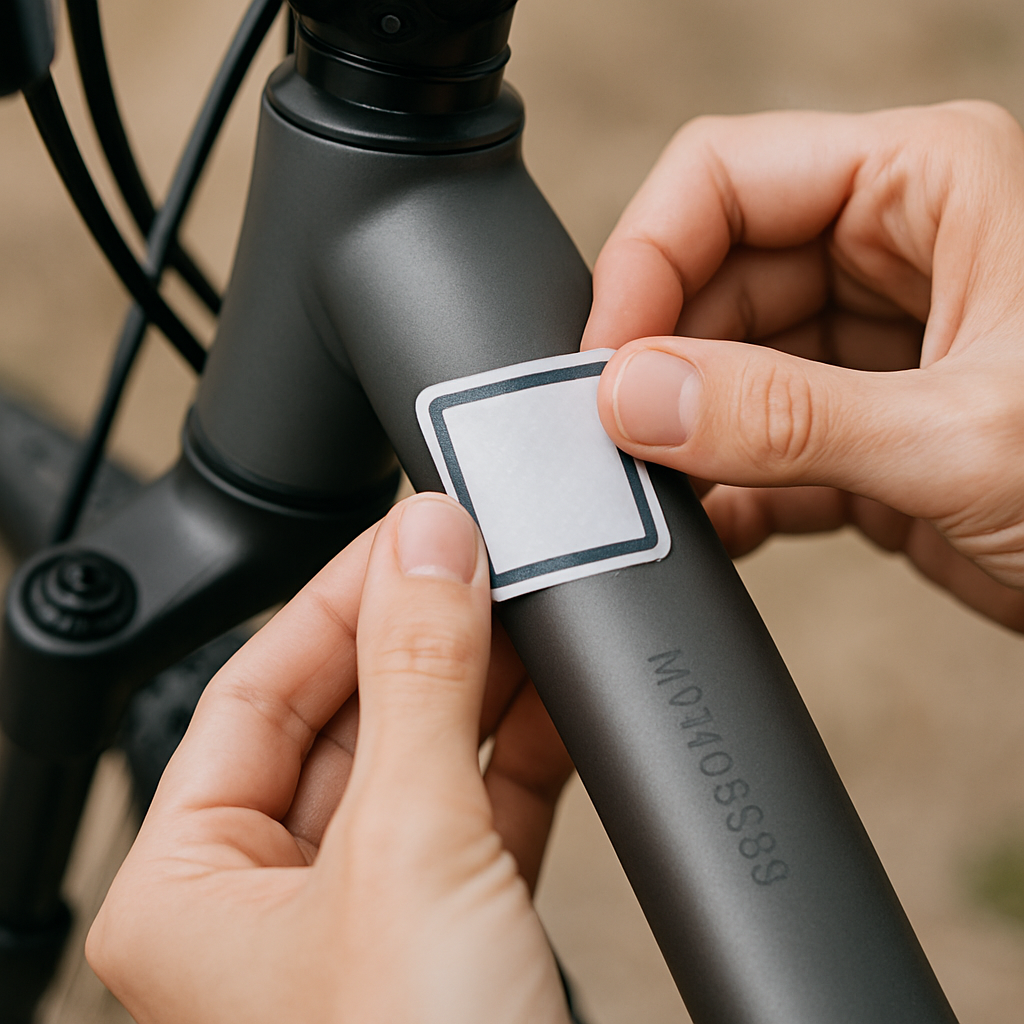
For additional security, consider etching your driver's license number or a unique identifier inside the frame where it's not easily visible. This hidden marker provides definitive proof of ownership even if exterior identification is removed.
Make your bicycle less attractive to thieves
Professional thieves target bicycles that can be quickly resold for maximum profit. Making your ride less visually appealing or more difficult to sell can significantly reduce its theft appeal.
Consider these effective deterrent strategies:
- apply distinctive, personalized decals or markers that make your bicycle instantly recognizable
- "uglify" expensive frames with removable vinyl wraps or temporary tape that conceal high-end branding
- replace quick-release components with security bolts requiring specialized tools
- add multiple visual deterrents like frame-mounted locks and security tags
- use bright, unusual accessories that make your bicycle stand out in a crowd
Some cyclists deliberately maintain a weathered appearance for valuable bicycles used for commuting. A premium carbon frame disguised under a layer of duct tape patches or with purposefully scuffed areas remains fully functional but loses street appeal to opportunistic thieves.
For high-theft areas, consider maintaining a dedicated "beater bike" with quality components but an unremarkable appearance. Save your showpiece ride for recreational routes where you'll never leave it unattended.
Remove accessories and do not leave valuables
Accessories not only increase your bicycle's appeal to thieves but also often become secondary theft targets themselves. Modern cycling equipment—lights, computers, bags, and e-bike components—can be worth hundreds of dollars alone.
Develop a quick post-ride routine:
- remove all lights, computers, and portable accessories
- take e-bike displays and batteries with you when practical
- never leave bags or panniers attached when parking
- secure quick-release components like wheels and seats with security skewers
- disconnect and take any charging cables or adapters
For e-bike owners, battery security deserves special attention. Beyond the significant replacement cost (often $500+), batteries contain valuable materials attractive to thieves. Many newer e-bike models feature integrated locking systems specifically for batteries, but adding a secondary cable lock provides additional security.
Consider replacing standard quick-release mechanisms with security alternatives that require specialized tools. These components add only minimal weight while significantly increasing security for wheels, seat posts, and other removable parts.
Avoid long-term outdoor storage
The duration of parking exponentially increases theft risk. Statistics consistently show that bicycles left overnight or for extended periods face dramatically higher theft rates, even when properly locked.
For apartment dwellers, explore these alternatives to risky outdoor storage:
- dedicated bicycle storage rooms offered by many modern complexes
- vertical wall mounts that save floor space in small apartments
- ceiling pulley systems that utilize unused overhead space
- foldable bicycle options for truly space-constrained living
- rental lockers available in many urban centers
When traveling, research secure bicycle parking options in advance. Many train stations, airports, and commercial centers now offer monitored bicycle parking facilities. Some cities have implemented high-security bicycle garages with controlled access and surveillance, providing reasonable daily rates for commuters.
For vacation or multi-day trips, never leave your bicycle on outdoor racks. Instead, bring it inside accommodations or use bicycle valet services increasingly offered by hotels in cycling-friendly cities. The minor inconvenience of indoor storage far outweighs the significant risk of theft during extended absences.
Record and save your bicycle's details
Comprehensive documentation is crucial for both theft prevention and recovery. Detailed records provide essential information for police reports, insurance claims, and online alerts if your bicycle is stolen.
Create a secure digital file containing:
- the bicycle's serial number (photograph it directly)
- high-resolution photos from multiple angles showing distinguishing features
- close-ups of unique components or customizations
- original purchase receipts and warranty information
- component upgrade receipts and documentation
- a current estimated value assessment
Store these records in cloud storage accessible from any device. Some cyclists create a private "bicycle passport" document with all essential information that can be quickly shared with authorities if theft occurs. Include your contact information and any reward offers directly in this document.
Regularly update your documentation when making modifications or upgrades. Changes to components, accessories, or appearance should be photographed and recorded, as these details can be crucial in distinguishing your bicycle from similar models during recovery efforts.
Learn more about how to protect your bicycle from theft using locks and tracking tools to complement your documentation strategy.
Consider insurance and recovery actions
Despite best preventative measures, theft can still occur. Preparing for this possibility with proper insurance and a recovery plan significantly improves your position if the worst happens.
Specialized bicycle insurance offers advantages over standard homeowner's or renter's policies, including:
- coverage for full replacement value without depreciation
- protection while traveling or competing
- lower or no deductibles specifically for bicycle claims
- coverage for accessories and components
- roadside assistance and event fee reimbursement
Establish a recovery plan before theft occurs. Prepare a template for social media alerts, identify local cycling groups to notify, and research nearby locations where stolen bicycles are commonly resold. Some communities maintain dedicated "stolen bicycle" social media groups that have impressive recovery success rates through community vigilance.
If your bicycle is stolen, immediately:
- file a police report with your detailed documentation
- update your registration status in bicycle databases
- activate any tracking devices
- alert local bicycle shops who might be approached to buy components
- monitor online marketplaces and auction sites
For comprehensive protection against theft and peace of mind, explore Guards Armor's protection and tech solutions designed specifically for modern cyclists facing evolving theft techniques.
While no single method guarantees complete protection, implementing multiple security layers dramatically reduces theft risk. By combining physical security, technology, documentation, and community resources, you can significantly improve your odds of keeping your bicycle safe in 2025 and beyond.
Frequently asked questions
What is the most secure bike lock in 2025?
U-locks made of high-grade steel, especially when paired with a heavy-duty chain or smart lock, offer the best security.
Can AirTags or GPS trackers really help recover a stolen bike?
Yes, GPS trackers (like AirTags) hidden in the frame or mounted discreetly significantly increase the chances of locating and recovering stolen bikes.
Should I register my bike, and where?
Absolutely. Registering with databases like Project 529 or Bike Index, including applying a sticker, helps police and community members identify and recover stolen bikes.
Are bike insurance policies worth it?
For expensive or beloved bikes, they're an excellent investment, covering theft, damage, and sometimes replacement.
What's the first thing to do if my bike is stolen?
File a police report immediately, notify the registration database, alert local bike shops, and check online sale platforms.
